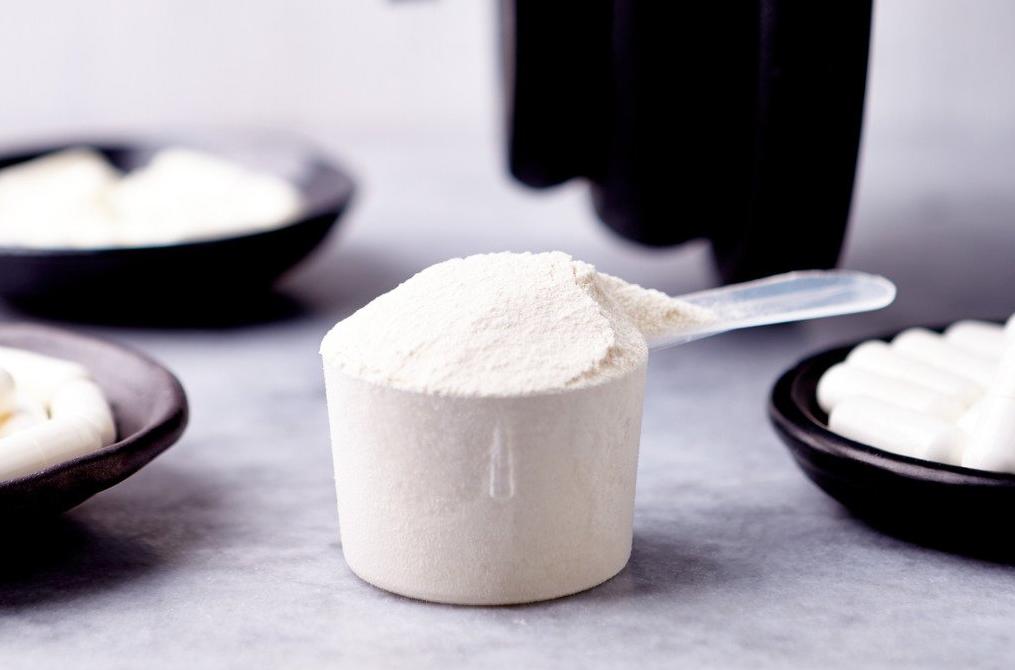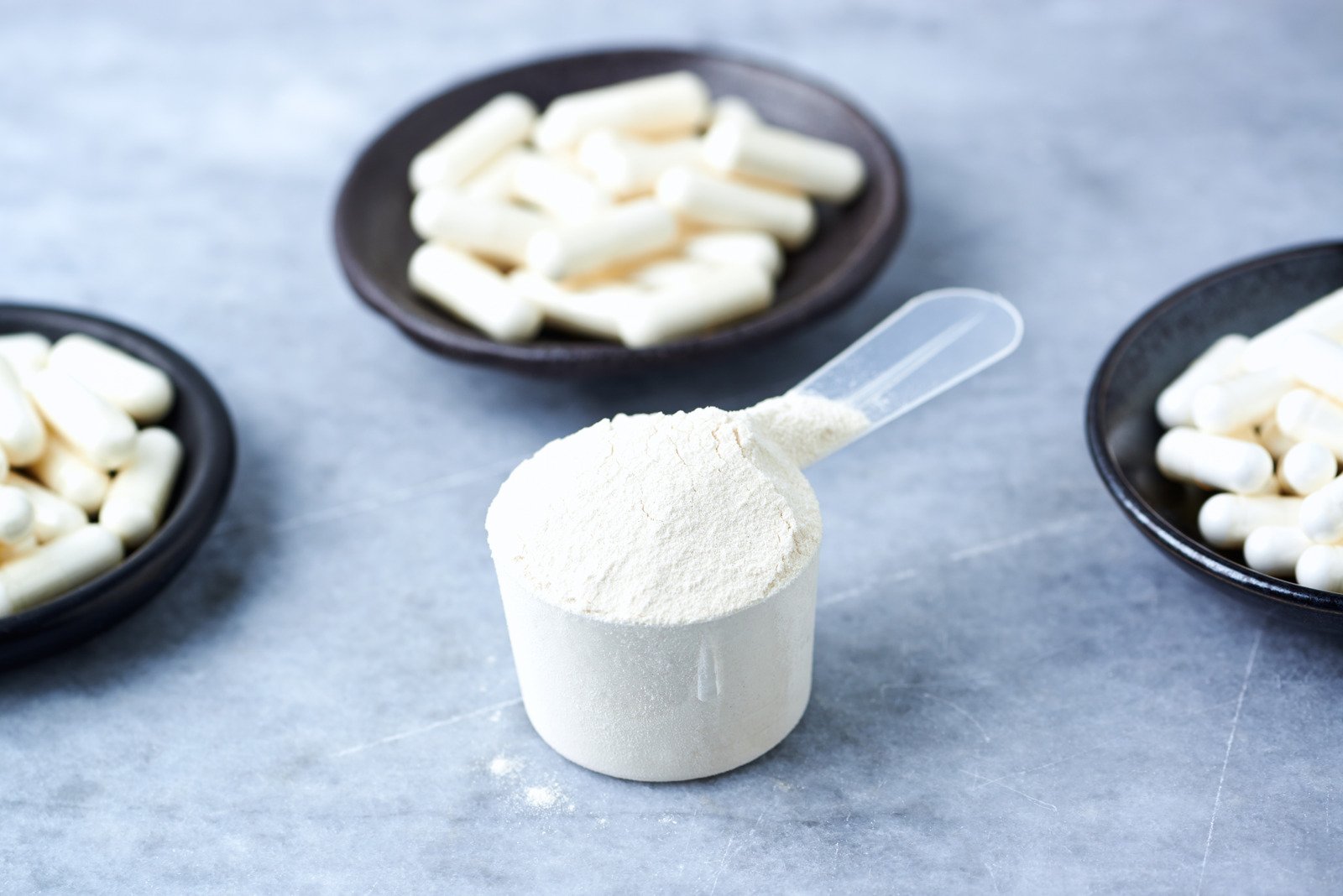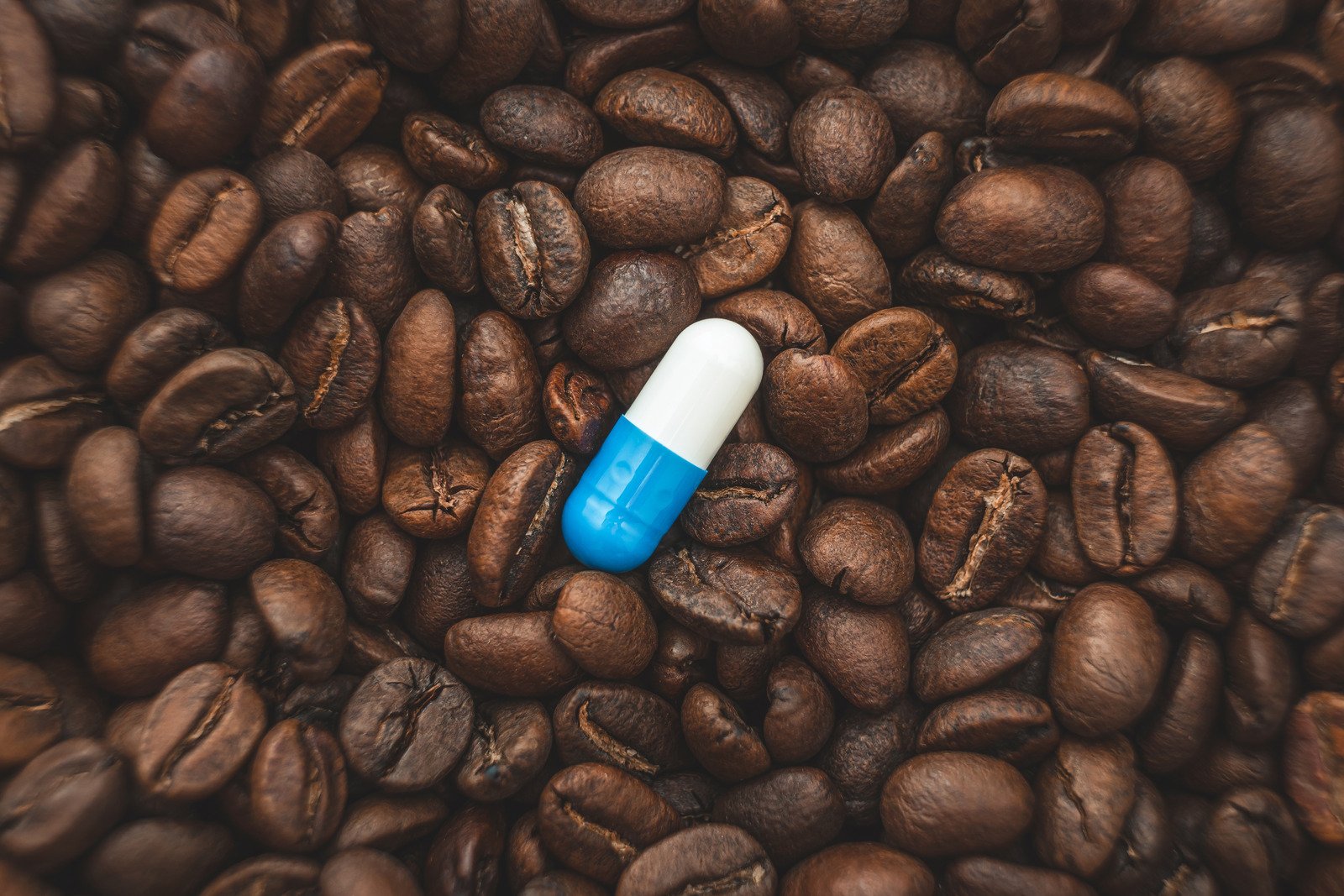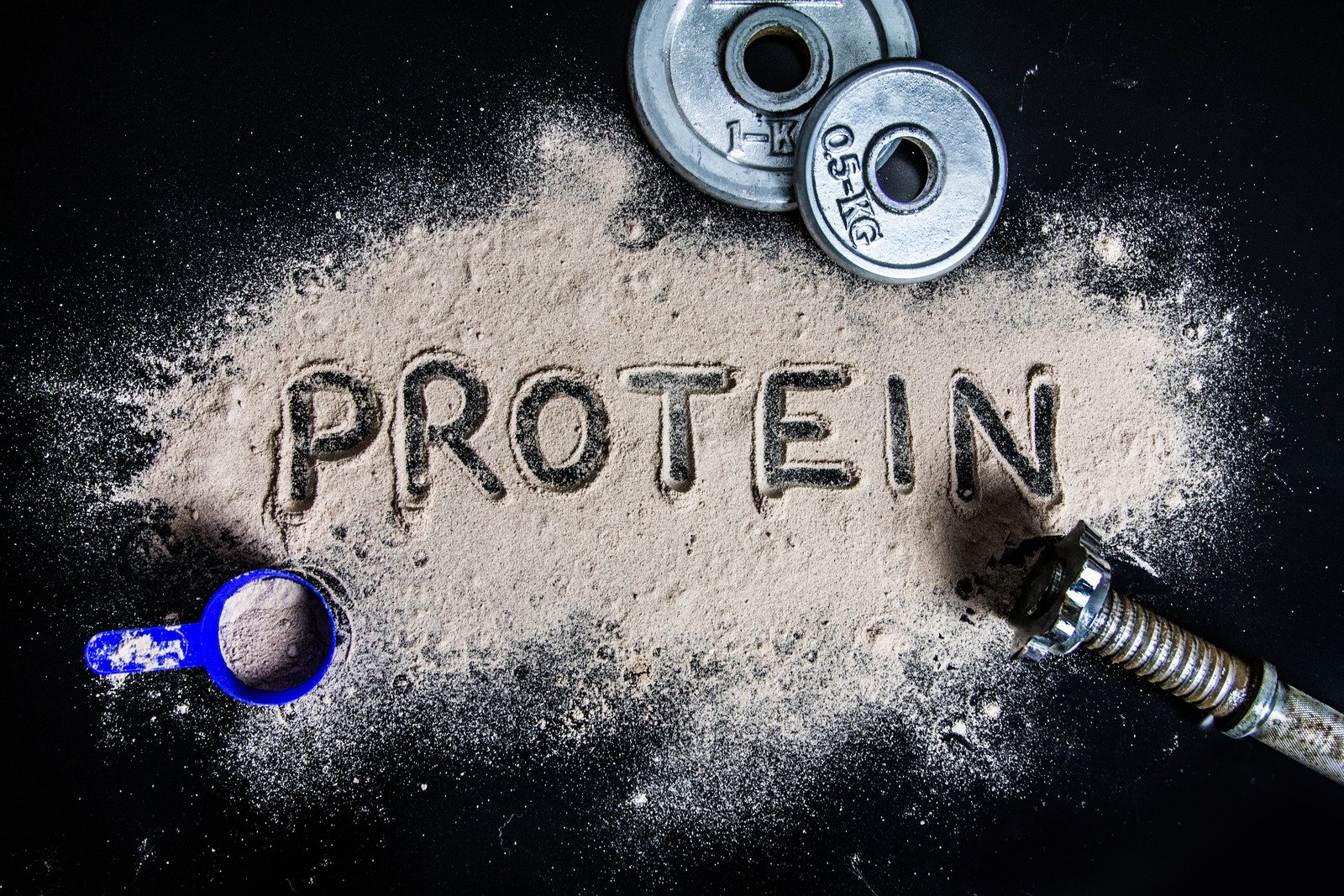Nutritional Supplements and Training

The use of nutritional supplements has skyrocketed worldwide in recent years.
A category of supplements that has become particularly popular in recent years is that of sports nutrition supplements.
In recent years, there has been a global increase in the sale of sports nutritional supplements, with the global market reaching $42.9 billion in 2022. (1)
Sports nutrition supplements are widely used by both professional athletes and fitness enthusiasts in general, as they promise, among other things, improved athletic performance, increased muscle strength and mass, quick recovery, injury prevention, etc. (2)
These supplements are typically used by athletes either before (“pre-workout”) or after training (“post-workout”) and come in various forms such as tablets, capsules, powders, liquids, etc.
However, beyond the spectacular benefits that many of these claim, you should keep in mind that, as with other nutritional supplements, their safety and effectiveness are neither tested nor guaranteed before they are put on the market.
In any case, discuss with your healthcare professional in which cases sports nutrition supplements may be beneficial for you.
A Few Words About Exercise
 Exercise has undisputed benefits for both our physical and mental health.
Exercise has undisputed benefits for both our physical and mental health.
There are 4 main types of exercise:
- Aerobic Exercise
- Anaerobic Exercise
- Flexibility Exercise
- Balance Exercise
Each of the above types of exercise brings different adaptations to our body, which is why an exercise program is recommended to include all types of exercise for you to experience the optimal benefits for your physical and mental health.
In summary, during exercise, the athlete/exerciser needs continuous energy supply to perform work. The body’s energy currency is a high-energy compound known as adenosine triphosphate (ATP).
However, the amount of ATP stored in muscles is limited, so the body must constantly replenish ATP stores to continue physical exercise. This is where the three energy systems for energy production help. (3)
Phosphocreatine System (Anaerobic Alactic).
It contributes to the production of ATP molecules through the conversion of phosphocreatine to creatine. It is the dominant energy system in the first 10 seconds of exercise as it has the advantage of being mobilized immediately compared to the other energy systems. However, the body’s phosphocreatine stores are limited, resulting in levels decreasing by 50% to 70% of initial values in just 5 seconds of high-intensity exercise and can be almost entirely depleted as a result of intense exhaustive exercise. The phosphocreatine system plays a significant role in high-intensity, short-duration activities (up to 10 seconds), such as sprints, throws, jumps, weightlifting, etc.
Anaerobic Lactic System (Glycolytic).
It contributes to the production of ATP molecules through the burning of carbohydrates (glucose) to lactic acid, in the absence of oxygen. This is where it got its name from, as anaerobic means “without oxygen”. The rapid breakdown of glucose results in the formation of lactic acid, the accumulation of which can lead to fatigue and exhaustion due to the accumulation of hydrogen ions and pH drop. It is the predominant energy system for activities lasting from 20 seconds to about 2 minutes, such as short-distance running of 100m, 200m, 400m, etc.
Aerobic Energy System.
It contributes to the production of ATP molecules through the burning of carbohydrates (glucose), fats, and to a lesser extent proteins, in the presence of oxygen. The aerobic system is the primary source of ATP for activities that last more than 2 minutes such as all running events from 800m to marathon, cross-country skiing, long-distance cycling, etc.
Book your appointment today and start the diet you deserve
Book AppointmentSports Nutrition Supplements
The Australian Institute of Sport categorizes sports nutrition supplements into the following categories: (4)
- “Sports” supplements. Special products that can be used as practical sources of nutritional components when it’s impractical to consume regular meals. This category includes sports drinks, sports gels, whey protein, sports bars, electrolytes, etc.
- “Medical” supplements. Supplements that can be taken after the diagnosis of a nutritional deficiency. This category includes iron supplements, calcium, vitamin D, multivitamins, etc.
- “Ergogenic” supplements. Supplements with direct action on athletic performance. This category includes creatine, caffeine, beta-alanine, etc.
All supplements, regardless of category, should be taken under the recommendation and supervision of a healthcare professional.
Nutritional Supplements During Training
 Many athletes resort to the use of sports nutritional supplements to gain a specific benefit in their athletic performance or to improve their performance in an “indirect way” (improving body composition, faster recovery, etc.).
Many athletes resort to the use of sports nutritional supplements to gain a specific benefit in their athletic performance or to improve their performance in an “indirect way” (improving body composition, faster recovery, etc.).
Many nutritional supplements are available on the market, claiming to improve athletic performance and body composition. However, only for some of these are there clear research data confirming the above action.
Below we will analyze 4 of the most common nutritional supplements during training:
- Creatine
- Beta-alanine
- Caffeine
- Protein
Creatine

What is creatine?
Creatine has been one of the most popular supplements in the sports world for decades.
It is a nitrogenous compound found mainly in skeletal muscles (95%) and in much smaller quantities in the brain (5%).
What is the mechanism of action of creatine?
Creatine, in the form of phosphocreatine, helps regenerate adenosine triphosphate (ATP), which is the body’s main source of energy.
In summary, muscles need energy (adenosine triphosphate, ATP) for contraction. Our body must constantly create or resynthesize ATP molecules to continue exercise and avoid fatigue. The phosphocreatine system is the one that dominates and supplies the body immediately and quickly with the required energy needed when performing high-intensity, short-duration exercises (up to 10 seconds).
Oral creatine supplements can increase muscle phosphocreatine stores by 10-40%.
What is the administration protocol?
The classic administration protocol includes a loading phase, where 20 g/day is administered for 5-7 days, followed by a maintenance period, where 3-5 g/day is administered for 20 days.
Another protocol involves administering creatine in doses of 3 g/day for 28 days.
What are the benefits of creatine?
Creatine supplement is the most effective ergogenic nutritional supplement available to athletes today.
Creatine supplements increase creatine stores in skeletal muscles, and the magnitude of this increase is significant because studies have shown that changes in performance are related to this increase.
Therefore, a significant benefit is that it improves athletic performance.
This improvement is observed in:
1) High-intensity, short-duration events or explosive events (e.g., short-distance running 100m or 200m)
2) Events with repeated sprints (e.g., football, basketball, tennis, etc.)
It also appears to contribute to increased muscle strength and lean body mass.
Side effects of creatine
There is no scientific evidence that short-term or long-term use of creatine causes any harmful consequences in healthy individuals, as long as it is taken according to guidelines.
However, an undesirable side effect reported by athletes due to its use is an increase in their body weight due to fluid retention.
This can be a significant disadvantage for athletes competing in specific weight categories.
Book your appointment today and start the diet you deserve
Book AppointmentBeta-alanine

What is alanine?
Alanine is a non-essential amino acid. This means it’s an amino acid that the body can synthesize on its own, and like most amino acids, it is used for protein synthesis.
What is the mechanism of action of alanine?
The ergogenic action of the amino acid beta-alanine comes from its combination with the amino acid L-histidine, thus forming the dipeptide carnosine.
Carnosine functions as an intramuscular buffer, meaning it removes hydrogen ions (H+) from inside the muscle. This is of major importance as an increased amount of hydrogen ions causes a sudden decrease in blood pH.
Consequently, your muscles cannot function properly, and fatigue sets in.
What is the administration protocol?
Administration of 65mg/kilogram (kg) of body weight is recommended, for a period of at least 4 weeks.
It’s best not to administer it all at once, but to take it gradually throughout the day (every 4 hours) in small doses.
What are the benefits of alanine?
Beta-alanine appears to increase time to exhaustion, helping you exercise longer at high intensity. There is data showing that supplemental administration of beta-alanine exhibits ergogenic action in:
- High-intensity events lasting from 30 seconds to 10 minutes (e.g., swimming and middle-distance running)
- Repeated high-intensity efforts (e.g., resistance training, team sports)
Side effects of alanine
The administration of beta-alanine supplement appears to be safe in healthy populations and at recommended doses.
The only adverse symptom reported is paresthesia (tingling), when taken in doses above 10-20 mg/kilogram (kg) of body weight, while other individuals need 40 mg/kilogram (kg) of body weight to feel paresthesia.
The symptom can be mitigated by using lower sub-doses (e.g., 4 sub-doses throughout the day).
Caffeine

What is caffeine?
Caffeine is a natural stimulant that is absorbed by the stomach and reaches its highest level in the blood within one or two hours.
What is the mechanism of action of caffeine?
Caffeine appears to stimulate the release of catecholamines (epinephrine, norepinephrine). These hormones contribute to increased lipolysis, which means an increase in the mobilization of fatty acids, which are used as an energy source by the exercising muscles.
Additionally, caffeine seems to affect the central nervous system, reducing the sensation of fatigue during exercise.
What is the administration protocol?
It is recommended to administer 3-6 mg per kilogram (kg) of body weight, 45-60 minutes before exercise.
What are the benefits of caffeine?
There are numerous studies showing a beneficial effect of caffeine on athletic performance in endurance events. Positive effects are also observed in short-duration, high-intensity events.
Side effects of caffeine
The administration of caffeine can cause some unwanted side effects, although there are significant differences from person to person.
Some unwanted symptoms that have been recorded are:
- Increased urination
- Tremors
- Insomnia
- Increased heart rate
Protein

What is protein?
Proteins are one of the three macronutrients in our diet.
What is the mechanism of action of protein?
There are more than 30,000 different proteins in the human body. Each of these has a specific biological role.
Proteins play an important role during exercise as they help repair tissue damage and simultaneously aid in tissue building.
What is the administration protocol?
There is no specific administration protocol, recommendations state that a dose of 20-40 grams of high biological value protein is sufficient to enhance muscle protein synthesis.
What are the benefits of protein?
Protein supplements are popular among strength athletes. Most strength athletes choose to consume a protein supplement after training with the aim of increasing muscle mass and strength.
The recommendations of the International Society of Sports Nutrition (ISSN) state that to increase muscle mass, protein intake should indeed be enhanced. Specifically, an intake of 1.4-2 grams per kilogram (kg) of body weight per day is sufficient for most athletes/exercisers. They also mention that this additional protein intake can affect muscle strength, as it leads to a small to moderate increase in muscle strength.
However, whether the increase in protein intake will lead to an increase in muscle mass also depends on several other factors (training program, protein quality, energy intake, age, etc.), so their indiscriminate use should be discouraged.
Side effects of protein
As mentioned, a protein intake of 1.4-2 g/kg of body weight/day is sufficient and safe for most athletes/exercisers who are otherwise healthy.
Consuming excessive amounts of protein can lead to some unwanted side effects such as:
- Fat gain. Adding extra protein to our diet adds extra calories. If this increase is not accompanied by an increase in exercise, then these extra calories may possibly be converted to fat.
- Gastrointestinal symptoms. A protein-rich meal leads to slow stomach emptying. This can lead to gastrointestinal symptoms and inability to perform exercise.
- Decreased athletic performance. When proteins are consumed at the expense of carbohydrates, you may see a decrease in your performance. Carbohydrates play an important role in athletic performance as they provide the body with energy essential for muscle contraction.
Particularly increased protein intake should be monitored for potential negative impacts on kidney health.
Book your appointment today and start the diet you deserve
Book AppointmentConclusion
The use of sports dietary supplements has increased significantly in recent years among athletes/exercisers. This seems to be partly due to the constant bombardment we receive from advertisements promoting the spectacular benefits of sports dietary supplements.
The first thing you should remember is that sports dietary supplements available in the market, like all dietary supplements, are not subject to approval and licensing by the National Drug Organization, but to notification. This practically means that their effectiveness and safety have not been checked before the product is released to the market.
The International Society of Sports Nutrition states in its recommendations that the key point in optimizing athletic performance and training adaptations is adopting an appropriate diet that will meet the energy needs of the athlete/exerciser and provide them with the appropriate amounts of macro- and micro-nutrients.
People who exercise for recreational purposes usually do not need to resort to the use of dietary supplements as a well-designed and balanced diet will provide them with all the necessary nutrients required for exercise performance.
However, high-level athletes who want to increase their athletic performance may need to consume some sports dietary supplement, always provided that it is taken under the guidance of an experienced dietitian.
So far, there are some sports nutritional supplements that are reported to have ergogenic effects, meaning they increase performance and work output during training or competition and affect body composition. However, this doesn’t mean that all potentially effective supplements can be used by all athletes.
Each of these has specific benefits and effects that should be considered before being used by the athlete, otherwise they may lead to undesirable results (side effects) and may negatively impact athletic performance.
In any case, you should discuss with your healthcare professional in which cases sports nutritional supplements may be beneficial for you.
Bibliography
- Sports Nutrition Market Size, Share Trends Analysis Report By Product Type (Sports Supplements, Sports Drinks), By Application, By Formulation, By Consumer Group, By End-user, By Sales Channel, By Region, And Segment Forecasts, 2023 – 2030. Available at: https://www.grandviewresearch.com/industry-analysis/sports-nutrition-market. (Accessed at January 2023).
- Gibson E, Schultz J, Glover E. To Supplement or Not. Mo Med. 2016, 113(4): 305–309.
- Artioli G, Bertuzzi R, Roschel H, Mendes S, Lancha A, Franchini E. Determining the contribution of the energy systems during exercise. J Vis Exp. 2012, (61):3413. doi: 10.3791/3413.
- AIS. Supplements. Available at: https://www.ais.gov.au/nutrition/supplements. (Accessed at January 2023).
- Kerksick C, Wilborn C, Roberts M, Smith-Ryan A, Kleiner S, Jäger R, Collins R et al. ISSN exercise sports nutrition review update: research recommendations. Journal of the International Society of Sports Nutrition. 2018, 15:38.













